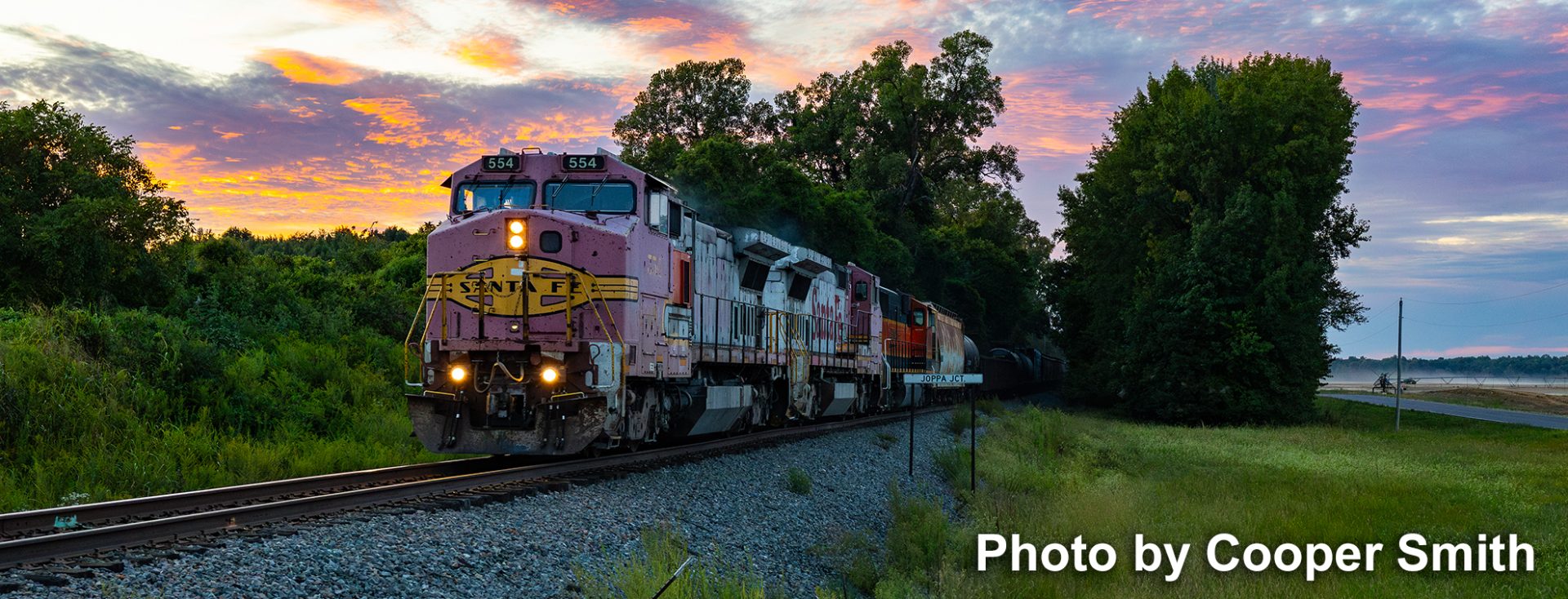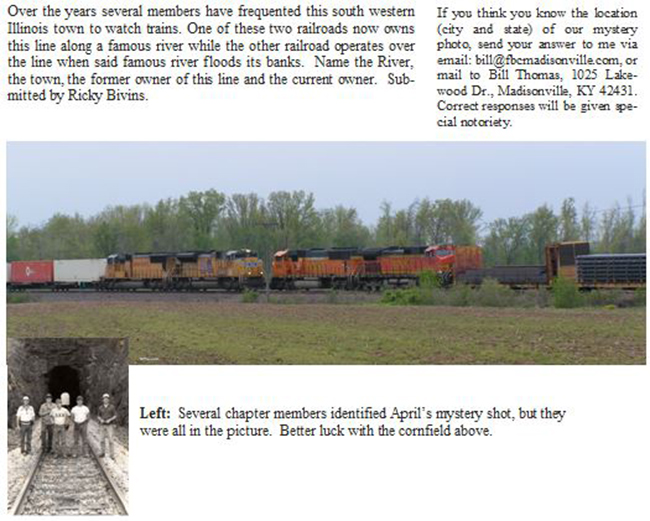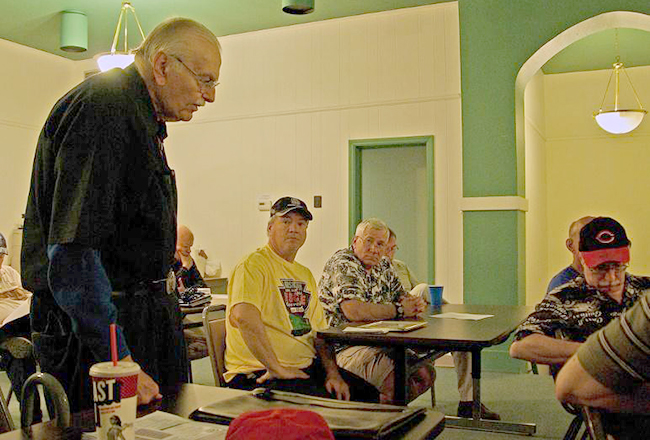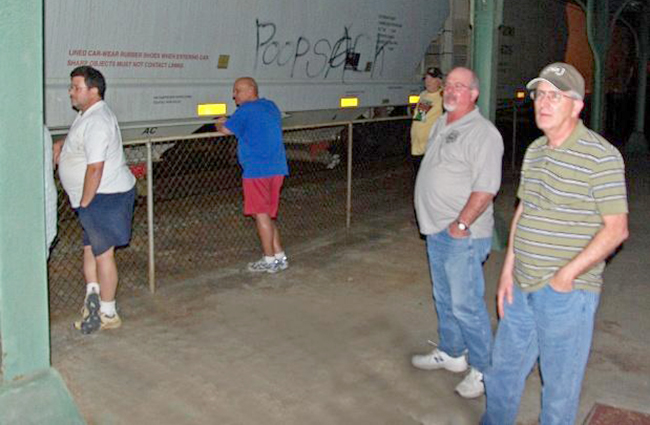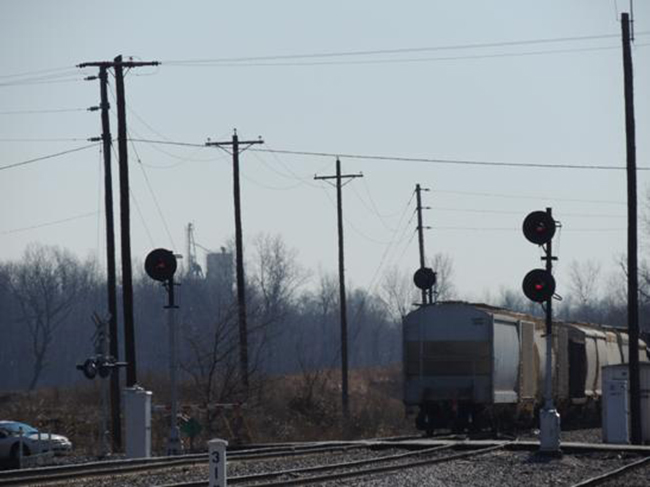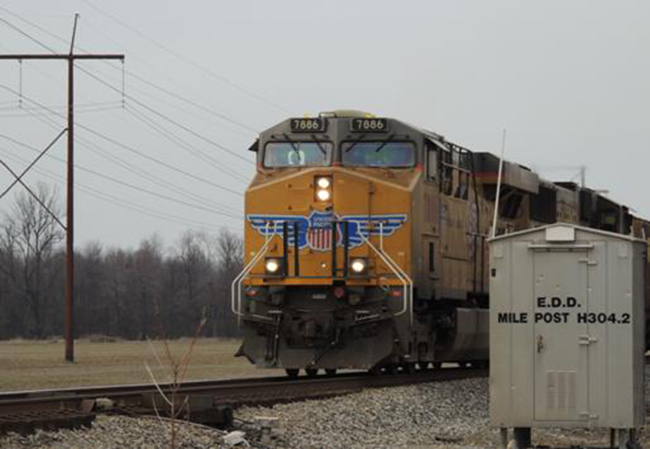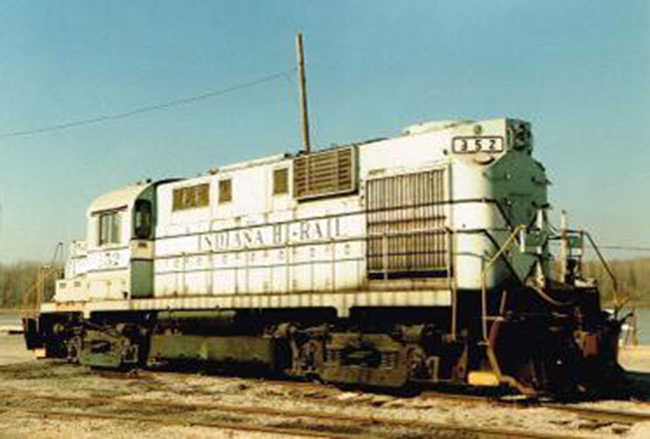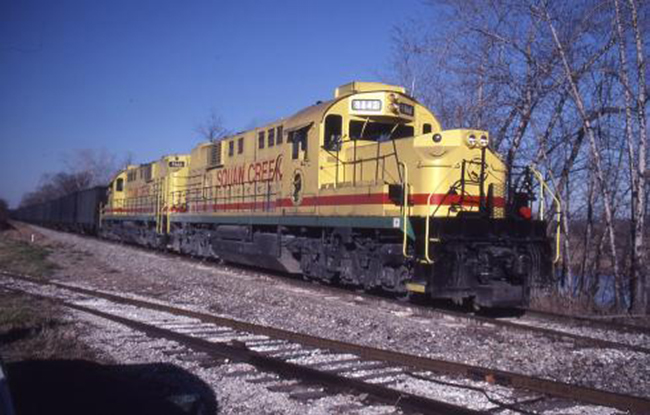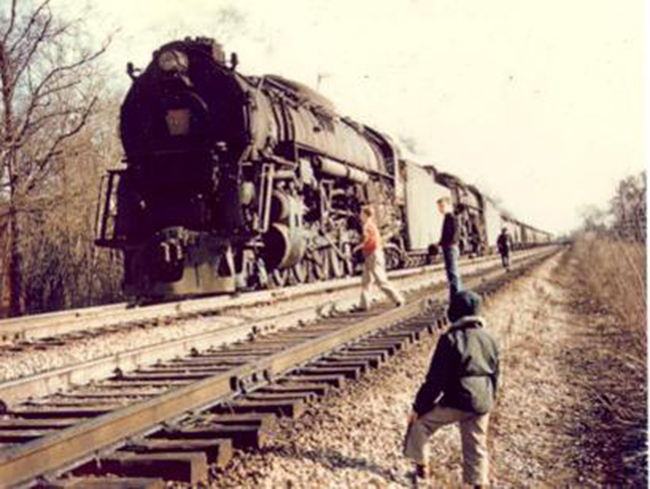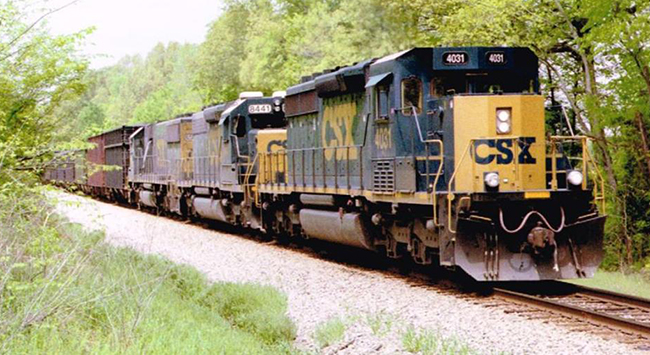
Author: Jim Pearson
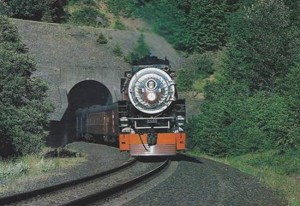 I chased this train up and down the Columbia Gorge, the dates were June 6 and 7, 1997. But my trusty Yashica had finally given up the ghost. My developed Ektachrome slides were all out of focus.
I chased this train up and down the Columbia Gorge, the dates were June 6 and 7, 1997. But my trusty Yashica had finally given up the ghost. My developed Ektachrome slides were all out of focus.
If it hadn’t been for photo stops and preventive stops to check for hot bearings, I would have only seen this train once in each direction. These two days the former ESPEE 4449 was running excursions between Portland, Oregon and Wishram, Washington. The Burlington Northern graciously hosted these runs, and the BNSF continues the practice. The train is traveling on the former Spokane, Portland & Seattle (SP&S) Railway on the Washington side of the Columbia River. Great scenery, good safe access for railfans, Beacon Rock, the Bonneville Dam tunnel, other rock lined tunnels and miles of track parallel to Hwy 14 only a few yards off the fog line. It doesn’t get much better than that, unless all your own slides had developed nicely too. Duh.!
The tunnel here is the result of moving the line further away from the river and dam when the “dam” people built the second powerhouse and bigger & better fish ladder at Bonneville. Lessons learned: a. Not a great idea to chase trains in a motor home, and b. Always have a backup camera. Credit to Gary Ostlund, submitted by James Futrell.
by Ricky Bivins, Chapter President
Well NRHS Members, the merry month of May is upon us. And as is usually the case, we will meet in Hopkinsville KY, on May 20, 2013 as guests of our Hopkinsville Members. Our meeting will take place at the usual time of 7:00 PM and we will meet in the former L&N RR Passenger Station located on Hwy 68/80 right down town. Every year we leave Hopkinsville informed and with a new appreciation for the town, its railroad interests and its people.
This month should carry on that tradition!
Our Hop’town Members have a guest speaker lined up for us. Cliff Downey is a local author of railroad books and a very knowledgeable individual. Cliff has in the past been a member of our NRHS Chapter. I am sure he will entertain and inform us Monday Night.
Our proposed trip to Progress Rail is on permanent hold. Members Keith Kittinger and Rich Hane have exhausted every option to make contact with Progress and both have constantly come up empty handed and feeling “brushed off”. Rich has learned that Progress is very busy, understaffed and without a Human Resource person. As a result, word was handed down that a tour is out of the question. So at this point there is no need in continuing with it. We have many other options to consider and as usual all that is needed is for a member to get the ball rolling and come up with a tour, trip or other event and bring it before the membership.
Steve Miller will have a report on our fall trip aboard the Nashville & Eastern which will be upon us in a few months.
The June Friday Night Live event, downtown Madisonville will be Friday June 14, 2013. Wally Watts plans to have his steam engines on hand, Bill Thomas hopes to have his Mobile Garden Railroad running, Steve may give the video outlet another try this year and I will be doing what I seem to do best at this event….TALK! And I will pass out our new Chapter Calling Cards which thanks to Matt Gentry, will be available just in time. This has become a signature event for us and is a load of fun. Adults and kids alike, get a kick out the sights and sounds of our display.
So members, try to make an appearance, even if only for an hour or so.
Jim Pearson, our Web Master has set up an email for the Chapter as was discussed last month. That address is: info@westkentuckynrhs.org. Jim and I have the user name and pass word. We as a Chapter need to discuss Who/Whom shall be responsible for checking the email and responding. As of this writing, our inbox is empty!
As for the display cabinet at Parkway Plaza Mall….I have done nothing! Short but true.
The Hopkinsville meeting is shaping up to be a good one people, so don’t miss out.
The Western Kentucky NRHS chapter is getting a group together for the Monterey Super Fall Foliage Excursion. The excursion is October 12, 2013 and boards at 7:30AM at the TCRM in Nashville, TN. This is the 216 mile round trip, see the web site for details (http://tcry.org/pdf/13-10-12.pdf). This trip will sell out early so we need to act fast.
We already have enough people for a group discount, so the ticket price will be $47.00 per person. In order to get the group discount all the tickets have to be purchased at one time with one payment. I need to have payment for the tickets by the next NRHS meeting on April 15, 2013 (I can accept the payment at the meeting.) If you will not be at the next meeting, you can mail me a check at the address below. If you want me to mail your tickets to you please enclose a stamped self addressed envelope. I plan on going to Nashville on April 16, 2013 to purchase the tickets.
Steve Miller
2721 S Virginia St
Hopkinsville, KY 42240
————–
I (Chuck Hinrichs) got a message from Jody Moore with Pullman Rail Journeys yesterday.
The regular runs of the first class private cars on the City Of New Orleans are beginning their regular runs next Friday, March 29. They will be running on two Chicago – New Orleans cycles per week with Chicago departures on Tuesdays and Fridays and New Orleans departures on Thursdays and Sundays.
The cars have been in the yard upside Union Station for a while, so we knew it was coming soon.
This is a new venture, so it remains to be seen whether or not it will be viable as a long term operation. The cars look great on the inside, and these folks are really going out of their way to make it a first class operation.
These runs may be around for a while; too soon to tell. But I would suggest that anyone wanting to ride down the Mailine of Mid-America in the round end observation car Ponchatrain Club should take the opportunity sooner rather than later.
For more information visit their website, http://www.travelpullman.com.
—————-
DVDs to Share…
Some of you may be familiar with the DVD series Great American Layouts by Allen Keller. Some of the videos are dated.
I have the following: 1. N Scale Cumberland Valley System of Bill and Wayne Reid 2. Ken McCorry’s Conrail 3. Howard Zane’s Piermont Division 4. John Armstrong’s Canandaigua Southern and The Yosemite Valley of Jack Burgress 5. Lou Sassi’s West Hoosic Division 6. Jim Providenza’s Santa Cruz Northern 7. Bill Aldrich’s New York, New Haven and Hartford and Bob Hayden’s Carrabasset & Dead River Railway 8. John Pryke’s New York, New Haven and Hartford 9. Paul Dolkos’ Boston & Maine New Hampshire Division 10. W. Allen McClelland’s Virginian & Ohio and Rick Rideout’s L&N Henderson Subdivision 11. Dick Elwell’s Hoosic Valley Railroad and Gil Freitag’s Stony Creek & Western 12. Lance Mindheim’s Chicago, Indianapolis and Louisville 13. Weathering Techniques, Creating Scenes, and Building Structures. 14. Bob Brown’s Tuolumne Forks Railroad.
If you would like to borrow one or more, just let me know, Bill Thomas.
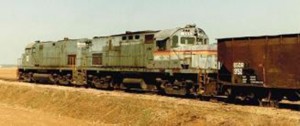 In the late 1980s, the Indiana Hi-Rail operated the former Illinois Central line from Newton, Illinois to Evansville, Indiana.
In the late 1980s, the Indiana Hi-Rail operated the former Illinois Central line from Newton, Illinois to Evansville, Indiana.
This railroad had a most interesting collection of mostly Alco built diesels from several different railroads.
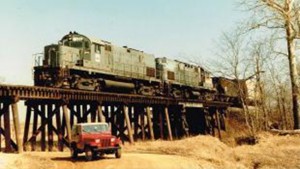 Included was a pair of 2400 HP RSD15s which came from Peabody Coal Company but were originally built for the Santa Fe in 1959. Because of their long low noses, railfans referred to them as “alligators”.
Included was a pair of 2400 HP RSD15s which came from Peabody Coal Company but were originally built for the Santa Fe in 1959. Because of their long low noses, railfans referred to them as “alligators”.
Also on the roster was a C420 built for the Delaware & Hudson, a 1800 HP RS11 from the Seaboard Air Line, and ex-L&N C420s #1315 and #1332 (ex-Monon #515) and S4 switcher ex-Santa 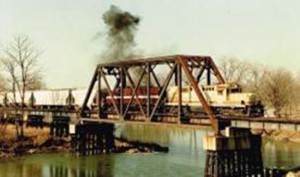 Fe #1519.
Fe #1519.
“Chasing” a train on this railroad was a misnomer as one would drive ahead to the next photo location and wait and wait while the train negotiated the notoriously decrepit track inherited from the IC. Today both the IHR and this line are long gone.
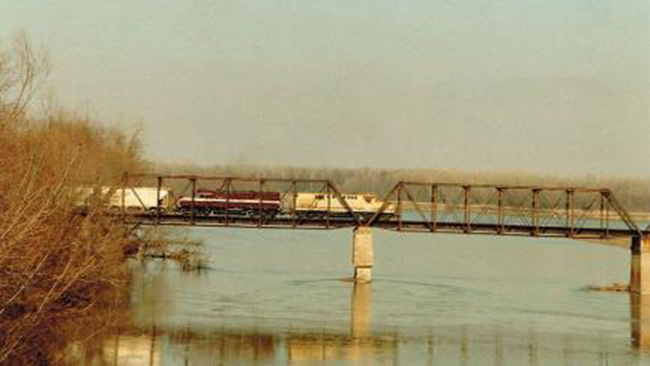
| Santa Fe 3751 The Restoration |
| Pentrex |
| Full Screen DVD |
| 1 Hr |
| Trainvideodepot.com |
| 10/26/2012 |
| $24.95 total for this video and its counterpart, Santa Fe 3751 Return to Steam bought as a set |
We are given front row seats as we observe the awe-inspiring process of Santa Fe 3751’s restoration undertaken by members of the San Bernardino Railroad Historical Society. The restoration of this 4-8-4 steam locomotive took place over a period of more than ten years beginning in 1981. The 3751 was the first Santa Fe Northern type locomotive and it was the first one ever produced by the Baldwin Locomotive Works.
The San Bernardino Railroad Historical Society was established primarily for the purpose of this restoration. The dedication of these people is almost beyond belief. Many took leaves of absence from their jobs for up to one year and one member even took early retirement just to be able to work on this project full time.
If you have ever wanted to see a steam locomotive completely disassembled, here is your chance. The 3751 was torn down as far as a locomotive can be torn down. The fire box was refurbished, the boiler flue tubing was totally replaced, and every sub component on the engine was torn down and rebuilit.
Given the enormity of this project, it is truly a miracle that it was completed successfully. It only happened because of the dedication and the skills of the San Bernardino Railroad Historical Society members. I am very confident that you wil say that watching this video was an hour of your time well spent.
